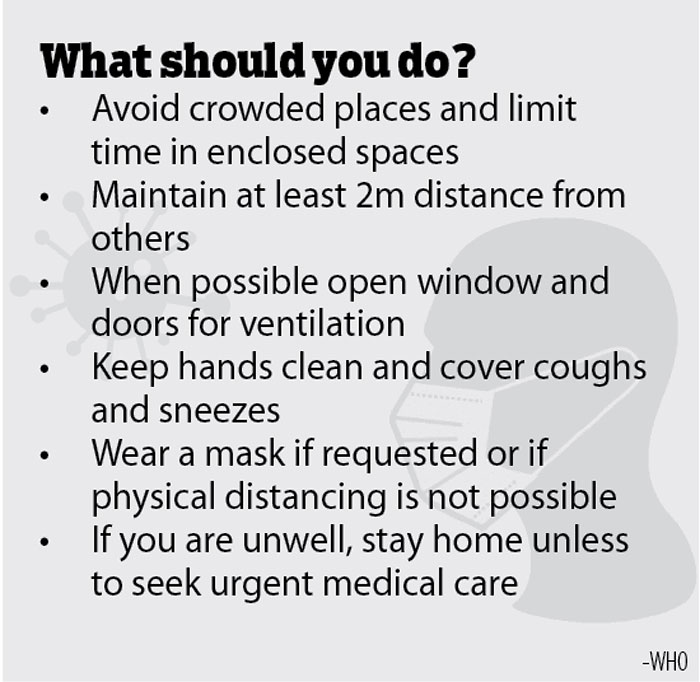TAG advises the public not to panic but take extra precaution
Younten Tshedup
There is more evidence emerging that indicates the novel coronavirus could possibly be airborne.
For a virus to be airborne it would mean that the pathogen could remain and be carried through the air.
Scientific evidence suggests that the new coronavirus can hover in the air for hours in indoor spaces, infecting people as they inhale.

The World Health Organisation (WHO) has acknowledged the growing evidence on the new mode of transmission of the virus. However, the global body stopped short of confirming that the virus spreads through the air for the want of more evidence.
Clinical microbiologist with the national referral hospital, Dr Tshokey said that airborne transmission with respect to Covid-19 doesn’t mean the virus is freely moving in the air.
He said that people would not be infected with Covid-19 just by exposing themselves to the open air while walking to the market. “If this was the case and the virus was freely moving in the air, it would have been a difficult situation for us by now.”
He said that infectious diseases like measles and tuberculosis are more contagious and highly airborne than Covid-19.
Dr Tshokey, who is also a member of the health ministry’s technical advisory group (TAG), said that the WHO has always indicated that airborne transmission is possible in certain settings.
In the intensive care units (ICU) where Covid-19 patients are treated and intubated, he said the procedure could generate aerosols (less than five micron) that can travel a little more than the conventional one to two metres, increasing the risk of transmission.
While the global body has considered this from the beginning, the microbiologist said that it was not the main mode of transmission. The main mode of transmission still remains through the contact of droplets expelled from the nose and mouth of infected persons, he added.
Dr Tshokey said that the group of international scientists who wrote to the WHO had specifically mentioned the possibilities of airborne transmission in indoor settings with poor ventilation systems.
He said that the scientists have deduced the conclusion from a few cases where there were outbreaks from pubs, bars and church choirs. The experts had suggested that in closed settings the virus could remain in the air for at least three hours.
For most pathogens, airborne transmission is a yes-no scenario, said the microbiologist who has been scanning medical literature on any new findings on the pandemic.
“Yes, it is airborne because the aerosols can travel a distance of more than one to two metres. This is short distance airborne, but the virus is not freely travelling in the air,” he said.
“It’s not airborne because the virus is not going to remain in the air and spread. It is not like a dust particle floating in the wind.”
He said that people should not panic. “The mode of transmission of the new coronavirus is ever-changing. With more data so many things are changing and mode of transmission is one of the most debated topics.”
How does this change the existing strategies?
While there are no major changes to the prevailing strategies, Dr Tshokey said, “It gives us all the reasons to reinforce our preventive measures including the use of face masks.”
“People who have not considered using face masks so far, it is time they get serious especially while in public places, closed and poorly ventilated settings,” he said, adding that if people still refuse to wear masks, it would be taken as a sign of disrespect to the other person.
He said that the government so far we have been promoting to maintain a minimum of one-metre distance. “Now I think it’s time to revise this and maintain at least two metres of distance between two people.”

